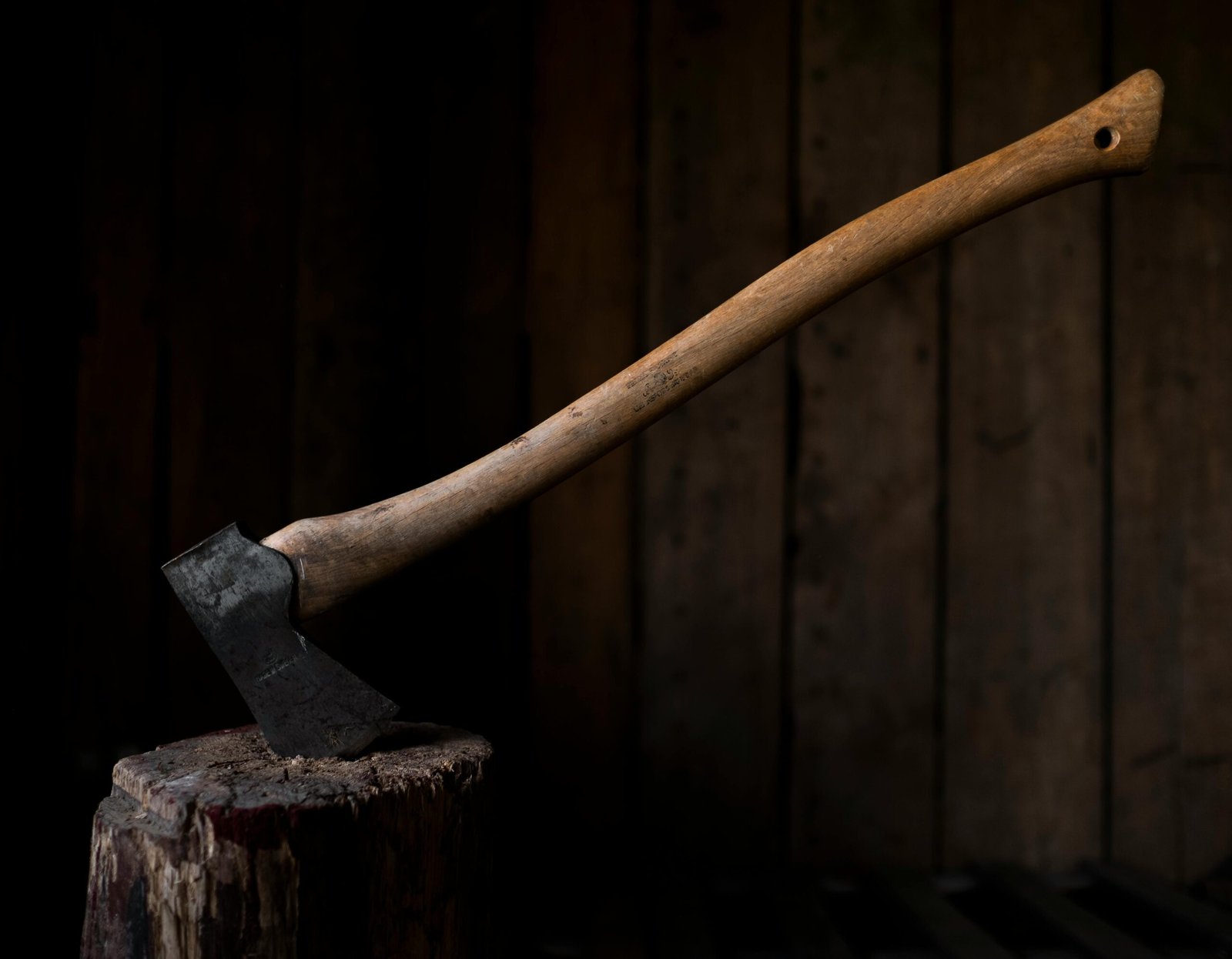There is a huge variety of axe shapes that come in a variety of sizes. For someone who is just starting out, or wants to make a new purchase it is really important that you choose the right axe for your situation. After all, you really wouldn’t want to be heading on a winter overnighter with an 11” hatchet and expecting to fell down a tree, right?
In this article, I’m going to share my practical knowledge, as well as all the research I’ve done to help you choose the best bushcraft axe for you. I think a 15′ to 19′ is the best size for an all-around bushcraft axe.
Size
The size that you choose is really important, and the functionality of the tool will change with it. That doesn’t mean that one is better than the other, it simply means that they are different and are used for different projects.
Small hatchets

I would classify anything that is below 11” as a small hatchet. Some people like to carry around one of these on their belt instead of a sheath knife.
With a hatchet like this, you really don’t expect to fell down trees, but it is a really good all-around tool. You can use it for meal prep, detailed carving, placing tent pegs as well as splitting small kindling.
If you are carving something like a bow or a kuksa, you will really appreciate how wonderful this tool is.
It is a lot more precise than a larger axe, but it removes material faster than most belt knives can. Also if you grip it closer to the axe head, it starts feeling more like a knife, so you can carve more precise notches for pot hangers and traps and do other detailed work.
I have also used a hatched to create feather sticks, and of course, they weren’t the best feather sticks that I ever made, but in a pinch, they would get the job done. I would bring one of these with me on a day hike, where I don’t want a whole lot of weight on my back and do not intend to make a huge fire. I also use one very frequently in my workshop.
Large felling axes

For me, anything more than 25” is a large axe. A large axe makes short work of falling down large trees, but also weighs a lot. You really need to consider if the weight is worth it for your situation.
If you’re on a trip in which you just get to a location and spend there 2 or 3 nights it makes sense to carry a big axe, as it will be easier to split firewood and fell trees.
Also if you’re relying on a fire to keep warm at night you always need to have enough wood to last you the night and if you don’t have a big axe and a decent saw gathering and preparing the wood can be a pain and you are going to burn off a lot of calories
Lastly, of course, when you are back home and you need to split all your firewood for the winter you really want to be using a large axe with a long handle to make your work as fast and easy as possible.
Medium sized axes

These are the axes between 11 and 20 inches, I think this is the best size and weight for an axe. The main axe that I carry all the time with me in the woods is about 19” and works perfectly for most jobs.
I can cut down a big tree if I wanted to, granted, I would break a sweat in the process, but the benefit is that it weighs a lot less on my back when I carry it. Also if I wanted to I could do some detailed work and have used it to prepare food as well.
Some things to consider:
Edge grind of your axe
Most outdoor woodsman kind of axes have a convex grind, but there are some things to consider. If the axe is going to be used entirely for falling trees, it would probably need a very thin bevel that can stick deep into the wood.
This grind is suitable for carving hatchets as well. If your axe is going to be used entirely for splitting you want thicker bevels that are going to pry the wood apart and split it easily.
If you’re going to carry one axe in the woods like most people you should get something with a bevel that is not too thick neither too thin- just the sweet spot that works for all tasks.
Sheath
It is really important to be safe. When you’re not using your axe it should be held securely in it’s sheath. For sheaths you will most commonly see leather ones, of course, there are kydex and nylon sheaths as well, it doesn’t really matter as long as it protects the edge.
Another case where you need a sheath is when you’re trying to pound something with the blunt end of your axe(Although I’ve heard that this is bad for your axe as it will put pressure on the eye and transform the handle) you don’t want to be swinging an unsheathed axe with it’s edge towards you, so put the sheath on.
Handle material
I personally have one axe with a wooden handle and one with a cheap synthetic one. After using them side by side for some time I have got to say that although I love the looks of the wooden handle, the synthetic one is just as good.
I have fallen many trees with it, split a lot of logs, and did some things I probably shouldn’t have done with that size of an axe.
And yet, after all, it’s still fine and rocking good. There is one negative though, when I’m using it without gloves it tends to give me blisters, granted, that might be because of the rubberized handle, but I thought I’d still share it
Sharpening and taking care of your axe in the field
If you think you are going to do a lot of axe work and you are going for several days in the woods, you should really consider tak9ing a sharpening stone with you.
The field sharpening process of an axe is way easier than the one on a knife because it’s way easier to sharpen your axe, bringing the stone to the edge.
You don’t need a flat surface. You don’t need anything too fancy in terms of stones there are plenty of budget two-sided stones on Amazon that will do the job.
After sharpening on the stone I always like to strop on my field strop because I want my axe hair popping sharp, just like my knife.





